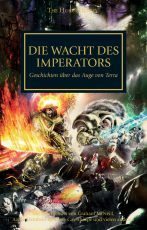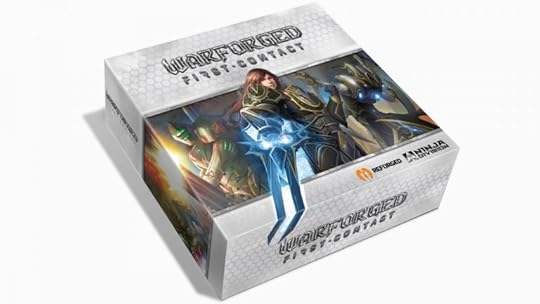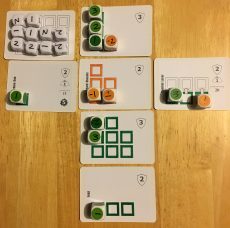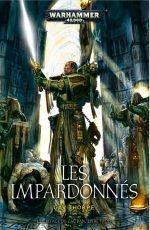Gav Thorpe's Blog, page 7
May 6, 2017
Azrael & Die Wacht Des Imperators
Azrael
The general release hardback of my Space Marine Legends novel, Azrael, is available to order on the Black Library website today, with physical copies in stores next Saturday.
If you want to read more about Azrael, take a look at my Author’s Notes, and an interview with cover artist Akim Kaliberda. If you want to super-size your purchase, there are also still limited edition copies available.
“The Dark Angels Chapter sprang from the First Legion of Space Marines to fight and die at the Emperor’s side. But over ten thousand years, even the most staunchly loyal warriors of the Imperium can fall from grace, and the Dark Angels guard their own murky secrets most carefully – only Supreme Grand Master Azrael knows them all. A legend among Space Marines, he has fought for centuries and ever at the forefront of battle. Now, with the enigmatically alien eldar as his uneasy and unlikely allies, he must tread the fine line once more between the pursuit of victory, and keeping the Chapter’s past safely buried…”
Buy Azrael
Die Wacht Des Imperators
Die Wacht Des Imperators (the German translation of Eye of Terra, book 35 in the Horus Heresy series) has been available to download as an eBook since last weekend, but today the physical book hits the shelves in Germany. It contains my short stories Inheritor and Master of the First, as well as the following:
The Wolf of Ash and Fire by Graham McNeill
Aurelian, The Long Night and Massacre by Aaron Dembski-Bowden
Brotherhood of the Moon by Chris Wraight
Vorax by Matthew Farrer
Ironfire by Rob Sanders
Red-Marked and Stratagem by Nick Kyme
Sins of the Father and The Herald of Sanguinius by Andy Smillie
The Eagle’s Talon by John French
Iron Corpses by David Annandale
The Final Compliance of Sixty-Three Fourteen by Guy Haley
“The galaxy burns at Horus’s command, and a billion more lives are lost with each passing moment – though it was not always so. Once, the title of Warmaster stood for honour, loyalty and a fierce pride in the strength of the Space Marine Legions. But perhaps by following the myriad lines of destiny and defiance that were already woven around the primarchs and their sons, we may yet come to understand the bitterness that can eat away at even the most steadfast of souls…”
Buy Die Wacht Des Imperators
**To make sure you don’t miss out on any blog posts, you can keep up-to-date with everything Gav by signing up to my monthly newsletter. As a bonus, every other month I randomly pick a newsletter subscriber to receive a free signed copy of one of my books.**
Please Feel Free to Share:







April 28, 2017
April 2017 – Q&A
 This is a compilation of questions that have been emailed and messaged to me recently. I’m incredibly busy at the moment and it’s taking longer than usual to get back to people – I will still try to respond to everyone, but your patience is appreciated.
This is a compilation of questions that have been emailed and messaged to me recently. I’m incredibly busy at the moment and it’s taking longer than usual to get back to people – I will still try to respond to everyone, but your patience is appreciated.
If you want to ask anything, you can post a comment here or get in touch through the contact page (and newsletter subscribers can just reply to any of my emails).
I’ve been posting Q&As for a while now, so if you’ve found this one interesting, you can look back at previous Q&As here.
Austin asked on Facebook: Which of your books would you recommend I read first? If you had to pick your favourite?
Warhammer – The Doom of Dragonback.
40K – Path of the Seer (or preferably the Eldar Path trilogy).
He also asked: In a split second you had to name your favourite Space Marine chapter, which one?
Blood Angels.
Nikoli also contacted me on Facebook: How do you motivate yourself to create and complete a character and how do you keep it up to date?
It’s a little different when I create characters, as they are usually for a project that is going to help pay my bills – that’s a great motivator! Keeping them interesting to write about is another matter, and that comes down to making sure they have a personality and motivation beyond a single story. If a character has their own goals and motivations it simply becomes a case of putting them into a situation and working out how they would react. When you can do that, the trick is to come up with the most interesting situations to put them in…
On the second part, I think that if you have the character settled I wouldn’t worry too much about other events – see the changes as an excuse to add to their story rather than change it, if that’s possible.
Lee contacted me on Facebook about a novel-in-progress: I am doing a Revilers book, a second founding chapter of the Ravens. Do you have any tips for a new guy to the process? I have had problems in the past finishing my projects and I am dedicated to the idea of writing the whole novel even if it doesn’t get published.
Regards finishing a novel, perhaps check out some of my posts that deal with planning: https://gavthorpe.co.uk/tag/writing-advice-planning/
I believe you can’t finish something until you know what you are trying to finish.
Another Facebook one, this time from Richard: Will the Black Library have another submissions call soon?
As far as I know they still have some subs from the last one to clear, but will have another window when they’re done. I would expect that to be in 2017, but don’t have anything more than a hunch.
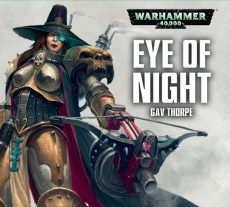 Garren left a post on my Facebook Page: Hey so with all the things going on in 40k with papa smurf being brought back and now your short Eye of Night out I keep wondering to myself if this is actually the end times even tho everybody has said it’s not. I mean I can’t really see something as big as a primarch being brought back not being capitalized on in the books.
Garren left a post on my Facebook Page: Hey so with all the things going on in 40k with papa smurf being brought back and now your short Eye of Night out I keep wondering to myself if this is actually the end times even tho everybody has said it’s not. I mean I can’t really see something as big as a primarch being brought back not being capitalized on in the books.
It’s not the End Times, in the sense of the way Warhammer became Age of Sigmar. The events of the Gathering Storm changed the ‘present’ 40K background but that is to establish a new story dynamic rather than to pave the way for a complete relaunch of the entire lore. Other changes will continue to happen as new models get released – maybe even new factions, who knows? – but nothing different from what was happening previously.
Devon commented on Facebook: [Are any audio dramas] starring the Living Saint, Celestine herself coming up?
Nothing by me. To be honest, I’m not sure I’ve got my head around the idea of Living Saints in the way they’ve been portrayed. I prefer my depictions of faith to be more ambiguous. Then again, if I could have a crack at writing an Ecclesiarchy novel I’d give it a go!
Andy asked via Facebook: Gav, I have been a fan for years and consider you the Eldar expert. I’m wondering if you happen to know of any official eldar symbol for the Black Library. I’m an archivist and would love to get a tattoo that not only shows my love of archives but of 40k and Eldar. Is there some GW doodle somewhere that depicts the black library in eldar symbology?
I don’t recall a specific Black Library symbol, I’m afraid. Wracking my brain for where it might be – something Harlequin related? Jes Goodwin might have created one at some point but I don’t think it’s on any of his published sketches.
James had a question on Facebook: Hope you don’t mind me asking, but I was wondering if you could give me the chronological reading order of your Raven Guard stories for the Horus Heresy?
I can point you here – https://gavthorpe.co.uk/a-readers-guide/
Nathaniel asked via email: I would like to ask a question regarding the writing process for Black Library: does BL limit what you can do with the canon? I am wondering if there is a guide dictating what can and can’t be done with certain characters, factions etc. If not, is it the job of the editor to protect canonical integrity?
There are certainly limitations to what can be done, though Games Workshop does not have a ‘canon’ in the sense that word is usually used by fans. The background is mutable and changing, so everything is always about a particular writer or developer’s point of view at that time, for that project. Hopefully most authors understand the style and overview of the property and how the universes work, and the editors are just on hand to smooth out any details. With a series like the Horus Heresy there are also other continuity issues to be borne in mind, to add to the complexity for both authors and editors.
[My ‘Thinking Outside The (Game) Box‘ blog might also be of interest]
 The following was asked anonymously in response to my Author’s Notes for Asurmen: The Darker Road: Mr. Thorpe, are you going to dedicate a separate novel to Arhra in your upcoming Phoenix Lords series?
The following was asked anonymously in response to my Author’s Notes for Asurmen: The Darker Road: Mr. Thorpe, are you going to dedicate a separate novel to Arhra in your upcoming Phoenix Lords series?
There’s no set plan for which of the Phoenix Lords will be covered or when (or by whom) but it was certainly my intention when I started thinking about the Phoenix Lords that Arhra would be covered at some point. How much detail it would go into would be up to the editors and GW regarding the incubi and all of that. You can see some of my further thoughts about Arhra in a response to the March Q&A here.
Bryan asked via email: I was wondering if could ask you a few questions and a favour?
1) How long did it take you to come up with the Battle Hymn of Vengeance? And what was your thought process for this?
2) Is there any chance you could write one for the Ravenwing? As I believe that the Battle Hymn of Vengeance is obviously a Deathwing/Inner Circle litany and refers to the Ravenwing on the second line “By cry of raven we are drawn”. And I would really like to know a cool litany for the Ravenwing as well (if possible)
I’ll answer these both in one, if I may. It didn’t take too long to write after I had created the general form – after that it was just a matter of getting the meter right for the lines. If you look closely you will see that not only are ravens mentioned, but in subsequent lines we see references to: iron, dread, storm, fire and death. If you add –wing to the end of each of those you have all six Wings of the Hexagrammaton, the original organisation of the Dark Angels. So this is a battle-hymn for not just the Deathwing of 40K but the ancient pre-Caliban Dark Angels Legion.
Shawn asked via email: Why is it that the Dark Angels have a force within their chapter called the Ravenwing. Shouldn’t the Ravenguard have like a Ravenwing force?
The dark Angels and the Ravenwing were referenced before the first publication of the Twenty Founding Legions list (and the naming of the Raven Guard), and it’s a muddy, complicated history since then. The Chapter has undergone various iterations ranging between monkish knights to plains Indians-inspired warriors and their iconography and naming conventions are similarly contorted. Given that ravens appear in a number of different folklores and myths, it isn’t surprising that they also make an appearance in the cultures and cults of several different Legions / Chapters. For instance, Odin’s ravens would inform parts of the Space Wolves background, while Graham McNeill referenced the Corvidae in his treatment of the Thousand Sons.
 Will asked via email: I know that you are quite busy both with your writing as well as the developing Big Stompy Robots, but, do people your readers in particular ever send you stories for critique and or suggestions to improve their story to ready it for submission to a publisher? I have been reading your post about the process and was curious.
Will asked via email: I know that you are quite busy both with your writing as well as the developing Big Stompy Robots, but, do people your readers in particular ever send you stories for critique and or suggestions to improve their story to ready it for submission to a publisher? I have been reading your post about the process and was curious.
I am often contacted by people that would like me to read their work but I have to send them all my standard reply, which is basically a polite decline to protect myself against accusations of plagiarism and because providing quality feedback takes time which I don’t really have. I understand it can be really frustrating for writers who are hungry for feedback, but it’s just not feasible for me to provide it.
James asked on my blog: Gav, I know you probably aren’t the one to ask (from what I’ve seen you’re a die hard loyalist to the imperium) but would it even remotely be possible for a dark apostle to go rogue and create a splinter group of word bearers within the eye of terror? I’ve had this idea floating around inside my head for a while and I’d like to know if it would actually be possible before I start trying to do anything with it. I’d ask some of the more chaos oriented authors but knowing my luck, they’d hide a daemon summoning glyph somewhere in the answer and the last thing I need is a bloodthirster chilling on the couch.
The thing to remember about Chaos and the Traitor Legions is that the vast majority of them operate now as a fractured collection of warbands. Even though Lorgar remains, he cares very little for the actions of his former legionnaires, and the individual ambitions and plans of mortals are beneath him. In the case of Chaos followers going ‘rogue’ is the norm!
Buck asked on Facebook: I’ll pose a question. Would gw ever consider letting forge world release the old ranges of rogue trader and pre 4th edition wf in resin or plastic or metal. Think there’s a limited release market for us older guys that missed out all those years ago. We pay through the nose on eBay.
We’ve recently seen a couple of Old Skool Blood Bowl teams put back on limited release. The biggest problem with Rogue Trader-era models and other older miniatures is whether the master moulds are still in existence or have perished. I’m pretty sure that as a limited release initiative GW might be open to the idea – try contacting them via the Warhammer Community Facebook page.
 And finally, Josephine wanted to know something a bit different on Facebook: I wanted to ask you a silly fan question no-one else will think of, but felt a bit embarrassed to do so! But I’ve worked up my courage now! I was wondering, what makes you laugh and are you ticklish? If so, where are you the most tickly?
And finally, Josephine wanted to know something a bit different on Facebook: I wanted to ask you a silly fan question no-one else will think of, but felt a bit embarrassed to do so! But I’ve worked up my courage now! I was wondering, what makes you laugh and are you ticklish? If so, where are you the most tickly?
I’m all for silliness, so as for what makes me laugh – my three year old boy Sammy keeps me laughing on a daily basis. And I’m ticklish on my sides!
**To make sure you don’t miss out on any blog posts, you can keep up-to-date with everything Gav by signing up to my monthly newsletter. As a bonus, every other month I randomly pick a newsletter subscriber to receive a free signed copy of one of my books.**
Please Feel Free to Share:







April 22, 2017
Strontium Dog
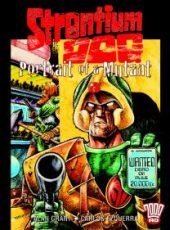 My newsletter subscribers will already be aware of my exciting news, but for everyone else, here’s the announcement!
My newsletter subscribers will already be aware of my exciting news, but for everyone else, here’s the announcement!
Occasionally I am asked if there is any other licensed property I would like to work with, bearing in mind I’ve already ticked off Warhammer and Warhammer 40,000 from my teenage fascinations. My answer is always that I’d like to work with the classic 2000AD comic strips of my youth, most notably Judge Dredd, Rogue Trooper and Strontium Dog.
Well, that’s happening! I recently had a great meeting with former Games Workshop ne’er-do-well Andy Chambers, and I’ll be working with Andy on Warlord Games’ new Strontium Dog skirmish game. You can see the official press release here. More details to come, but I am really looking forward to having some fun with Johnny Alpha, Wulf and, of course, the Gronk.
Andy and I will be reprising our team-up arrangement that worked really well on Battlefleet Gothic – he’ll be handling the rules design and the bulk of the mechanical gubbinz, I’ll be leading the charge on the background presentation and we’ll collaborate on the scenarios and campaign stuff.
Expect plenty of gunslingin’, time-bombin’, Kreeler-punchin’, mutie-blastin’ goodness and keep an eye out for further updates.
And speaking of the lovely Mr Chambers, check out Warforged: First Contact, a new miniatures game he has created with another of my old colleagues, Tuomas Pirinen. The Kickstarter is now live, and as of writing this, is already very close to funding.
So that’s my exciting news for the week – let me know in the comments your favourite Strontium Dog stories!
**To make sure you don’t miss out on any blog posts, you can keep up-to-date with everything Gav by signing up to my monthly newsletter. As a bonus, every other month I randomly pick a newsletter subscriber to receive a free signed copy of one of my books.**
Please Feel Free to Share:







April 21, 2017
Woohoo! Warbeast has been shortlisted!
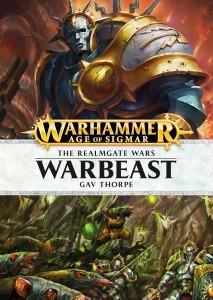 I’m utterly gobsmacked. There were so many great titles longlisted for this year’s David Gemmell Legend Award, that I really hadn’t even considered that Warbeast would make it through to the shortlist. But it has!
I’m utterly gobsmacked. There were so many great titles longlisted for this year’s David Gemmell Legend Award, that I really hadn’t even considered that Warbeast would make it through to the shortlist. But it has!
The final shortlist is
Warbeast, by me!
Wrath, by John Gwynn
Nevernight, by Jay Kristoff
The Wheel of Osheim, by Mark Lawrence
The Bands of Mourning, by Brandon Sanderson
Thank you to everyone who took the time to vote in the first round – now I need you to do it again for the final shortlist! Voting closes at midnight on Friday 2nd June, and you can cast your vote in just two clicks over at www.gemmellawards.com.
If you enjoyed Warbeast, don’t forget you can find my Author’s Notes on the Warbeast page of my website, along with links to several interviews where I discuss the novel, and Age of Sigmar in depth.
 What will I do if I win? I might have to break out my happy-happy joy-joy dance, usually reserved for when I finish writing a book!
What will I do if I win? I might have to break out my happy-happy joy-joy dance, usually reserved for when I finish writing a book!
Whatever happens, I’m looking forward to attending the awards ceremony at this year’s EdgeLit event in Derby on Saturday 15th July.
Vote Now!
**To make sure you don’t miss out on any blog posts, you can keep up-to-date with everything Gav by signing up to my monthly newsletter. As a bonus, every other month I randomly pick a newsletter subscriber to receive a free signed copy of one of my books.**
Please Feel Free to Share:







April 19, 2017
Interview with Matt Renshaw – Audio Producer at Black Library
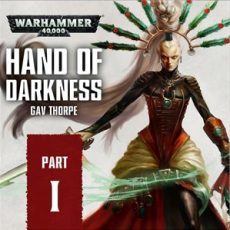 Matt Renshaw, Audio Producer at Black Library, has been kind enough to answer a few questions from his side of the process, including some advice on writing for the audio format.
Matt Renshaw, Audio Producer at Black Library, has been kind enough to answer a few questions from his side of the process, including some advice on writing for the audio format.
Matt has also given me the cast list for my two new audio dramas, Eye of Night and Hand of Darkness, which you can read at the bottom of the page.
If you’re enjoying these audio dramas, you might also like to read my Author’s Notes.
How did you get involved with audio work? What’s your background?
I’m a music technology nerd, and took a course in audio engineering a few years back, where I learnt how to record and produce bands. I wasn’t expecting any kind of career from it. But, luckily, right after I finished my course, I wangled a job at an audiobook studio. (I also love books, so that was double-lucky). There, I recorded and produced lots of audiobooks, and transferred to GW 3 years ago.
Did you have any connection to Games Workshop before joining the company – are you a Warhammer hobbyist?
I’d known a little about GW, as my brother was a hobbyist when I was younger (my Dad still keeps finding 3rd edition Ultramarines as he tidies his house…), and, I’d played the odd game of Dawn of War; but wouldn’t say I had any real connection to the company.
However, I’ve certainly become a fan of the background since. Its such a rich and deep universe. Its a real pleasure to record the novels and dramas, and seeing where authors take the various series next.
I’m not yet a hobbyist. Must not yield…must resist…the lure…of…the…new Thunderhawk….
Could you tell us a bit about the process to turn a script into a finished audio drama. Which part do you enjoy the most?
Once I have a finished script, I start to annotate it using my unique/convoluted sticky-tabs system, thinking about the dynamics and beats of each scene. I create a wilds list (all the shouts and screams the actors make), and work out a recording plan.
I then cast and book the actors in. Alongside the script, I’ll send each actor some brief character info; background on the story and setting; and perhaps some artwork or photos of their character’s model.
We’ll then spend a morning or afternoon recording the narration with a single actor; and a full day recording the dialogue – usually with a small group. This is the part I enjoy the most. Its a fun challenge to direct the cast and get them to stretch their imaginations – as they’re often voicing roles unlike anything they have previously. Its also great to listen to the actors interact and watch them feed off each other’s energy as they perform a scene.
Once we’ve finished recording, a couple of days are required to edit the session down to the best takes of each line of the script.
This audio is then sent off to the sound designers, who add their magic to the production. They’ll send me mixes of their progress, and I’ll give feedback on timings, musical themes, weapon FX, atmospheres and so on – ensuring their ideas fit the Games Workshop IP and, hopefully, sound awesome. It takes our sound designers around 10-15 days of very skilled, intense work to complete a 70 minute drama.
Do you have a nugget of wisdom you’d like to share with writers thinking about working on an audio script?
1. Think about which parts of the script can be expressed with the sound design, instead of via the narration or dialogue.
2. Try and give your characters their own distinctive voice/idiolect on the page. This will inspire the actors when they come to perform their roles, and distinguish each character for the listeners.
3. Try and have each scene occur in a single location. This will help avoid any complex changes of points of view in the sound design.
If you enjoyed that interview, you might like to read this previous interview with Penelope Rawlins, the voice actor who plays Yvraine in Hand of Darkness.
Cast List for Eye of Night and Hand of Darkness
 Eye of Night
Eye of Night
Narrator: Gareth Armstrong
Katarinya Greyfax: Emma Gregory
Roboute Guilliman: Jonathan Keeble
Horst: Steve Conlin
Moriana: Annie Aldington
Genhain: Cliff Chapman
The Familiar: Matthew Hunt
Axaeus: Gareth Armstrong
Custodian: Melvyn Rawlinson
Hand of Darkness
Narrator: Gareth Armstrong
Yvraine: Penelope Rawlins
Roboute Guilliman / Birdwhisper: Jonathan Keeble
Eldrad Ulthran: Toby Longworth
The Visarch: Steve Conlin
Tigurius: Cliff Chapman
Veilwalker: Emma Gregory
Ruisafoneth: Matthew Hunt
Meliniel: Melvyn Rawlinson
It can sometimes take a while for me to listen to the final version of my audio dramas, as I’m often several projects down the line by the time they come out, and deadlines for other titles are usually looming. This time around I’ve managed to listen to both Eye of Night and Hand of Darkness, and I’m really pleased with how they have turned out – Emma Gregory does a particularly great job as Greyfax.
If you would like to find out more about any other part of the writing / publication process, let me know in the comments and I’ll pester people for interviews!
Buy Eye of Night & Hand of Darkness
**To make sure you don’t miss out on any blog posts, you can keep up-to-date with everything Gav by signing up to my monthly newsletter. As a bonus, every other month I randomly pick a newsletter subscriber to receive a free signed copy of one of my books.**
Please Feel Free to Share:







April 17, 2017
Audio Week 2017 – Author’s Notes
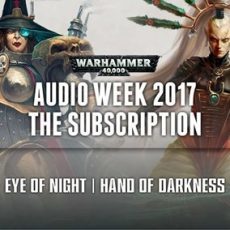 People often ask me if, when writing for Black Library, I get to choose what I write or not. The answer is, of course, not a straightforward one, because I’m working in someone else’s universe, and I have ongoing discussions with the editors about all sorts of things.
People often ask me if, when writing for Black Library, I get to choose what I write or not. The answer is, of course, not a straightforward one, because I’m working in someone else’s universe, and I have ongoing discussions with the editors about all sorts of things.
Usually it’s a case of Black Library asking if I would like to write about X, or that they are putting together a series about Y. The exact content isn’t defined beyond that. For example, the Legacy of Caliban series came about because there was an opportunity to release a novel alongside a new iteration of Codex: Dark Angels. Other than involving the Sons of the Lion, it was an open brief.
Other times there have been well-defined parameters to follow, particularly regarding stories and books tied in to a wider narrative. The most obvious of these are the Horus Heresy and the Beast Arises, but it was also true for The Curse of Khaine (part of the End Times narrative) and Warbeast (as an instalment for the Realmgate Wars).
These latter types of tie-ins can be quite taxing, because there’s usually a lot of stuff to absorb and trying to find an angle for a novel that presents something different to the pages and pages of background already published is a challenge. Put simply, if someone is already telling a story, it’s hard to take part of it and turn it into a different story…
So it was with a bit of anxiety that I agreed to write two audios that used the Warhammer 40,000 Gathering Storm narrative as a springboard. On the other hand, I love writing audio, and taking part in a week dedicated to the medium would certainly not hurt my sales numbers. Added to that, a lot of the rumours around the new storyline were quite tempting.
As it turned out, what was required was not a story set within the Gathering Storm storyline, but in the aftermath, the Warhammer 40,000 universe as it now stands after the great upheavals. While there was still a lot to take in, it meant that the big three books of lore had become backstory, not narrative, and that made it far easier to come up with a fresh tale (or two).
Two-for-One
The commission was, in theory, a simple one: Two stories deriving from the Gathering Storm, one focussed on the Imperium and the other on the eldar characters. It got a little more complicated, because the two audio dramas would be split into three segments, so each had to be a satisfying chunk of story but also part of the longer narrative.
Oh, and if they could be linked together somehow, that would be awesome. And if you could get Roboute Guilliman into both, that’s bonus points…
The main characters were set by the established background – Inquisitor Greyfax and Yvraine of the Ynnari. Finding a thematic link was the issue, but it was there that my long history with the Warhammer 40,000 universe came in very handy.
You see, I was there the day that Horus slew the Emperor…
Sorry, no, I wasn’t. That’s a different thing. I’ll start again.
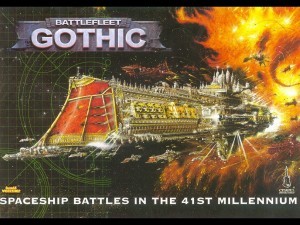 I was there the day Abaddon launched his 13th Black Crusade, the first time around. Well, some of the build up to it. We hadn’t conceived of the Eye of Terror worldwide campaign then, as such, which has gone on to be revisited tangentially to form the basis of the Gathering Storm events, but we started laying groundwork for it in the background material for Battlefleet Gothic. It was basically a reason for why Abaddon, thrice-cursed, Despoiler of Worlds and arch-villain was knocking around the Gothic sector rather than laying waste to Terra and the Imperium. And the reason was that in order to muster the forces he needed, to make the necessary diabolic pacts, he needed to fulfil a prophecy (yes, one of them) by claiming the Hand of Darkness and the Eye of Night.
I was there the day Abaddon launched his 13th Black Crusade, the first time around. Well, some of the build up to it. We hadn’t conceived of the Eye of Terror worldwide campaign then, as such, which has gone on to be revisited tangentially to form the basis of the Gathering Storm events, but we started laying groundwork for it in the background material for Battlefleet Gothic. It was basically a reason for why Abaddon, thrice-cursed, Despoiler of Worlds and arch-villain was knocking around the Gothic sector rather than laying waste to Terra and the Imperium. And the reason was that in order to muster the forces he needed, to make the necessary diabolic pacts, he needed to fulfil a prophecy (yes, one of them) by claiming the Hand of Darkness and the Eye of Night.
Which he did, of course, and here we are with the 13th Black Crusade well underway. And the observant among you may have noticed the two titles of my new audio dramas – the Hand of Darkness and the Eye of Night. What a co-ink-ee-dink.
Going back to the older material gives everything a nice sense of continuity. With the Gothic War and Abaddon as the common factor, the two artefacts gave me a thematic link while allowing two very separate tales to unfold.
Pushing the Sounds
I’ve mentioned before that using the audio part of ‘audio drama’ is not only essential, but also great fun. This was one of the major considerations for me with these two stories. Being released as part of audio week, they had to showcase what is best about the medium. In terms of sound effects it was a case of going big and going often.
Part of that is thinking about the structure of the scenes and where the story takes place. If I can make sure the plot takes us to sonically interesting settings (a phrase I didn’t envisage I would type when I woke up this morning) then I’m halfway there.
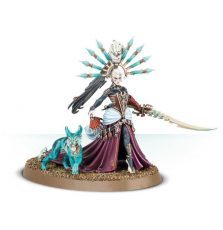 With Eye of Night the scenes take in the Imperial Palace, the near-airless remains of a world destroyed by Abaddon’s Planet Killer, a swamp in the Eye of Terror and a fortress of Tzeentch. Hand of Darkness gives us scenes of psychic communion, the webway and Black Library, the actual Garden of Nurgle and a plague fortress in the Eye of Terror.
With Eye of Night the scenes take in the Imperial Palace, the near-airless remains of a world destroyed by Abaddon’s Planet Killer, a swamp in the Eye of Terror and a fortress of Tzeentch. Hand of Darkness gives us scenes of psychic communion, the webway and Black Library, the actual Garden of Nurgle and a plague fortress in the Eye of Terror.
Another area ripe for exploitation was that of psychic effects. In prose we often italicise psychic communication, or do other funky stuff to indicate daemonic speech and so forth. In audio this extra dimension opens up a brand new soundscape, and as both Greyfax and Yvraine are psykers it was a grand opportunity to see what we could do in that direction.
Script Over Prose
One last thing that made this a very enjoyable project was Black Library’s decision to have audio dramas submitted in scripted format again. For a while I have been writing in prose, as requested by the editors, so that the stories can be used in anthologies and so forth. This makes things more difficult, as it is hard to make the written word ideal for audio and reading at the same time.
A simple example is describing a noise. In usual prose, I might describe the crash of a slamming door resounding down the corridor. In audio, the narration might mention the door slamming, but the design should be used to convey the actual sound of that. So, do I write it for prose and hope the editors tweak the words to avoid the repetition, or write for audio and leave it a little sparse for readers?
Working in the script format also forces the writer to think more about sound direction, scene length and so forth, making it easier to see if the narration is going on too long, if nothing interesting has happened with the sound for a while, etc.
With each audio drama I write I feel that I am exploring new ground but also bedding in acquired knowledge allowing me to push the format each time. Expect to see plenty more audio work from me in the future. I have just finished another with pointy-eared characters at the fore, the start of a series hopefully, and I had some great fun with that, but you’ll have to wait to find out more.
Part One of Eye of Night is available to download right now, and you can subscribe to both Eye of Night and Hand of Darkness over on the Black Library website.
Keep an eye on my blog later this week to read an interview with Matt Renshaw, Audio Producer at Black Library, who was kind enough to answer a few questions from his side of the process. If you’re interested in reading more about how to write for the audio format, you can see all my related blog posts here.
**To make sure you don’t miss out on any blog posts, you can keep up-to-date with everything Gav by signing up to my monthly newsletter. As a bonus, every other month I randomly pick a newsletter subscriber to receive a free signed copy of one of my books.**
Please Feel Free to Share:







March 31, 2017
March 2017 – Q&A
 This is a compilation of questions that have been emailed and messaged to me recently.
This is a compilation of questions that have been emailed and messaged to me recently.
If you want to ask anything, you can post a comment here or get in touch through the contact page (and newsletter subscribers can just reply to any of my emails).
I’ve been posting Q&As for a few months now, so if you’ve found this one interesting, you can look back at previous Q&As here.
Jonas Dollwet messaged me on Facebook with his cool conversion for Nakir of the Consecrators, as introduced in my novel The Unforgiven. He has a growing force of Consecrators and also had some questions for me: 1) Do the Consecrators have a battlecry? 2) Do the Consecrators follow the Dark Angels’ organization or do they have their own? 3) How do you come up with names for members of the Unforgiven? (this one always pains me!) 4) Do you think they hoard jetbikes? Now that Sammael has been retconned I do think there might be more out there… 5) is their name anything to go by? Do they actually take the relics from Fallen they have killed, sanctify (consecrate) them and include them in their armoury?
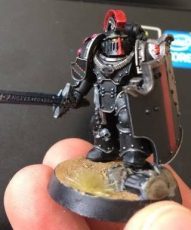
Superb conversion by Jonas Dollwet
1) Not that I know of. Perhaps something like ‘Honour the past!’
2) I would think they are pretty much the same as the DA Chapter organisation, although with their penchant for older gear perhaps there’s wiggle room for some other specialists – maybe older style terminators rather than Deathwing Knights? Also, they don’t have the warp-powered fun from the Rock like the Dark Shrouds. Maybe they have dug up a Malcador tank and a couple of Mastodons along the way?
3) Start here: https://en.wikipedia.org/wiki/List_of... and then let wiki-surfing be your friend!
4) For sure they must have a squad at least…
5) That is a great idea. Makes me want to write the story of the first Consecrator.
Thanks for getting in touch. To be honest I’ve been flagging on the DA front after so much writing for them, but I had a lot of fun with Nakir and his friends and you’ve reignited my desire to do more with them!
Iracundus commented on my blog, in response to the February Q&A: The struggle between Arhra and Karandras I think is also reflective of how Eldar society was still struggling to come to terms with the Fall. The Path system and the current incarnations of the Aspects are the final end product, but I am sure initially things were more fluid as evidenced by how differently Arhra and Karandras envisioned the Scorpion. I wonder how many other Aspects had Eldar who disagreed with it. Perhaps they left to found their own Aspects rather than trying to redefine their existing one.
Rather than the simplistic black and white view of Arhra = power hungry and evil, I think Arhra disagreed with the direction the Path and the Aspects were going (increasingly formalized and rigid), while the others disagreed with his apparently more ruthless no holds barred views. I’ve always seen his split with the Phoenix Lords and his attack on them as being the last desperate throw of the dice after being on the losing side of any previous philosophical verbal debate. Of course the road to Slaanesh is paved with good intentions and Arhra’s actions may have destroyed whatever hope there may have been of getting his views accepted.
What was once a (legitimate?) difference of vision between master and pupil has in the generations since hardened into a doctrinal divide between sects, with each viewing the other as a corruption of the truth. Rich material to mine for a story about the Eldar.
Absolutely – I don’t do ‘and he woke up evil and killed all the younglings’ as a motive… Ahrha’s fall has to be poignant and important, and linked to the greater story of Chaos and the eldar, much like Malekith’s. I know you’re a keen explorer of the (a)eldar(i) background so hopefully we can come up with something that is both surprising yet resonant. I don’t even know if I’ll be writing it, but hopefully I’ll have some input.
Markus asked on the blog, in response to my Three Top Tips for Black Library Submissions post: I’m still waiting as well to hear back from BL after passing through round 1. I guess what I’m trying to say is that patience is a virtue, especially when it comes to the world of books and publishing. Anyway, I wonder if Gav could do a blog post on his experiences of hearing back from book publishers, in terms of how long it’s reasonable to wait before inquiring etc etc. All that sort of technical info you know? Hope that makes sense!
Former Black Library editor Laurie Goulding shared this information online, so I’m sure he won’t mind me putting it here too:
“So, back in the day, there was just the one Submissions Editor – me. Then my managers realised I was better utilised elsewhere in BL, so the job became “whoever is available from Editorial, trawl the inbox”. Now we have a much better system in place, which is our freelance liaison (liaison freelancers, not a liaison who is freelance) checks each submission against a set of criteria. If they pass those criteria, he reads it properly and checks if it at least makes sense. You’d be surprised how many don’t.
If a submission fails before this point, you won’t hear anything back. It’d be too time-consuming.
Then the liaison makes a pile of the submissions that have made the cut, and brings them to our weekly Editorial meeting. They get put in the middle of a table, and we each grab one at a time and read it.
If we like it, we put a tick at the top and put it back in the middle for another editor to look at. If we’re not sure, we put a question mark and explain what gives us pause. If we don’t like it, we put a cross and throw it aside.
Two ticks is [sic – editors, eh? :D] enough to be “approved”, or a combination of three ticks/question marks. A cross is an instant rejection.
Approved submissions get notified, and we work out the next step. Usually this is “Await our instructions”, but it could be specific feedback like “You’ve not quite got the dialogue for Space Marines right, please make more formal” or “This isn’t how the warp works, please check the 40k rulebook” or “Would this not be better from the Tau point of view?” At this stage we are inviting the submitter to tweak their work to make up for what we see as its weak points.
After that, we’d enter into a conversation to start a back-and-forth with that writer on expanding their sample into a full story. This is handled by the editor who most enjoyed the work, so you’ve got someone batting for you.
(And no, nothing against multiple submissions – but we’d rather see one AWESOME and well thought-out submission than five mediocre ones produced in the same amount of time. If you have time to write three, for example, why not revise the first one a few times instead? Quality over quantity, always.)”
John asked via Facebook: Who are or what it the watchers in the dark? I’ve been asking around about the Watcher in the Dark and it’s being said its a Cabal members. Is this true?
Nobody knows what or who they are (I have my ideas but they’re not official or public) but the Cabal thing only came about because the word ‘cabal’ was used in close proximity to them in a novel. Very tenuous link.
John also asked: Any near future thought on a 30/40k or fantasy graphic novel? Your audio dramas are awesome, and the voice actor/actors are golden. Was hoping Titan comics might have gotten a hold of you..
On the comics front, it would be great to do some work but, as you say, I haven’t been approached. I think that future comics publishing is going to be on a licensed basis going forward (rather than internally from BL, such as with Maccrage’s Honour), so it’s down to individual licensees like Titan who they want to use. I’m always open to contact from any licensees, be they video games companies, comics publishers or anyone else interested in writing or creative consultancy.
Beth asked via the newsletter: Do the Ynnari also nom up the souls of humans that die near them? I imagine such a snack wouldn’t be much, but at least it might be something! Are the Dark Eldar and Corsair Ynnari still slavers or are they required to stop/limit that practice? I recall it being noted that Corsairs already tend to keep slaves in a more limited capacity, but I am curious if the Ynnari will have a completely different outlook on keeping humans around for anything ranging from cheap work force, entertainment and so on!
I’ll preface this with the caveat that I haven’t any particular insider info beyond what has been put into the books so far, but this is my take on what’s there.
Although rules =/= the lore, as I read it the various Ynnari formations and units gain benefits from any destroyed units nearby (as well as specific buffs from Ynnari losses), so by extension I assume this means that they can get a fix from humans, orks and whatever other stray souls get released in their vicinity.
The way I”m looking at the Ynnari is more as movement than a single organised mass – we know from the Harlequins that it is possible to both serve Ynnead and the Laughing God at the same time, so I would expect former practices to be maintained to a certain degree. In the case of the Dark Eldar, it’s more a case of approach than mechanics for most – the fact that they are sustaining themselves with the souls of departed allies as much as enemies offsets some of the spirit fodder they give up, but in times of need… Above all else, the Ynnari have tried to move past the previous distinctions of kabalites, outcasts and craftworlders, and certainly any morality attached to their practices. Given that the Ynnari are also more active alongside the humans than previously, it is probably not a good idea for them to prey too much on their occasional allies!
It’s also worth bearing in mind that the Ynnari are the ones that have stepped outside ‘conventional’ aeldari society – that is they move between the structures of the craftworlds, Commoragh, exodites and so forth. They are not trying to build a society as such, so have no interest in infrastructural concerns like concentrated slave labour. As mostly itinerant forces they will simply live off what they can form the others around them, in exchange for protection, favours, or whatever.
Beth followed up with:How long do you personally believe a human in 40k could survive if she was stuck with the Eldar (corsairs /Ynnari to be specific) and they actually wanted the human not to wither away swiftly. I know juvenats have their limits, I know webway slows down aging a bit, but was still wondering what you would imagine the maximum is. Not to mention what other methods, in your opinion, might be employed.
I imagine that the aeldari can sustain life almost indefinitely if they can be bothered – certainly haemonculi can keep victims alive for decades despite excruciating and crippling torture. If an aeldari was to keep a human ‘pet’ (okay, let’s be generous and say ‘companion’!) I imagine they could be kept alive for centuries, although I wouldn’t want to stake anything in regard to the human’s mental health after all that time. Add in to that the same warp-time-dilation-thing that goes on with the webway and a human could quite possibly crop up several thousand years after going missing.
Violent death needn’t be an obstacle either. The perpetual’ John Grammaticus was restored several times by the technology of the Cabal, most likely aeldari in origin. We also know that the Commorraghans can grow new bodies for themselves if a little bit of them remains. Doing something for a simpler organism like a human wouldn’t be a stretch, especially with the Ynnari’s particular skills in spirit manipulation.
Troels asked via the website: Any leads on who it was that Zahariel recognised behind Lord Cypher’s mask?
None. It was a suggestion from editor Laurie Goulding that Zahariel recognise his adversary, but we didn’t decide exactly who it was – yet…
David asked on Facebook: I have one question, if I may, where do you get the inspiration for the Stormcast names? Obviously this is not the Old World with their germanic names, are the new “order” names made up of are they based or inspired by any of the current or old civilizations?
The Stormcast names are honorifics adapted from their old names, and I was given some guidance by GW – more classical-themed with Latinesque or Greek elements. A bit like Ultramarines, really, with -us, -eus, -ia appended onto real names (I used a mix of Rus, Slavic and Frankish names for inspiration).
 Mhoram asked on Facebook: Hey Gav. Is there any chance your Phoenix Lords series will include a novel about Irillyth, phoenix lord of the Shadow Spectres? I know he’s not exactly part of the “main cast” of those warriors, but I’d be excited to learn more about him.
Mhoram asked on Facebook: Hey Gav. Is there any chance your Phoenix Lords series will include a novel about Irillyth, phoenix lord of the Shadow Spectres? I know he’s not exactly part of the “main cast” of those warriors, but I’d be excited to learn more about him.
It’s a possibility – the series is fluid and so while not one of the original Asurya, Irillyth could make an appearance at some point.
Nicx asked on Facebook: Hail Dark Angels LoreMaster Thorpe. I am a big fan of the Dark Angels, and I am in the process of making a 1st Legion 30k force. I was thinking about the Librarians in 30k. Would the DA have a Master Librarian, like Ezekiel (my favorite character) in 30k? Also Do you know if you, or someone else will write about the other 3 Voted Lieutenants of Raven/Iron/Storm Wing? As I would love to model each wing’s leaders.
As far as I am aware, the Dark Angels maintained a Librarius the same as others legions both pre- and post-Caliban contact (before Nikaea disbanded them, of course). I can’t recall if any of the chief librarians were named – not someone I’ve covered.
Hopefully there will be more about the other Wings of the Dark Angels in forthcoming novels, as well as details in a future Forge World book, including their leaders.
Christopher asked on Facebook: You and CZ Dunn are my favorite 40k writers. Do you collaborate often to determine the dark angels past/future?
Thanks. We occasionally check stuff with each other, but we don’t have a shared grand plan. It’s the same for most Black Library works, except for the shared narratives such as Horus Heresy and Beast Arises. An interesting topic though, I’ll add it to my blog list.
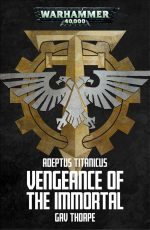 James asked on Facebook [in relation to my recent short story Vengeance of the Immortal]: Is that the same Evocatus from Honour to the Dead? I loved that Audiobook.
James asked on Facebook [in relation to my recent short story Vengeance of the Immortal]: Is that the same Evocatus from Honour to the Dead? I loved that Audiobook.
Thanks. Yes it is, good memory!
Devon asked on Facebook: So as a long time GW guy, what is your opinion on Primarchs returning to 40k? If you don’t mind my asking.
There were two gospel truths when I was in the GW Studio. Firstly, the Horus Heresy would never be made as 28mm miniatures. Secondly, the Primarchs would never return. As of now, both are out the window!
Any changes like this are all in the detail – how individual writers deal with the new reality. I’m already dealing with some of the opportunities presented by the Gathering Storm narrative, and so far it’s been fun playing with the new toys. I think it could go too far, but for the moment having one Loyalist returned is okay.
Aaron (not Dembski-Bowden!) asked on Facebook: I look forward to seeing these [Gathering Storm] events transpire in a novel. Any idea if this is going to happen?
I don’t think there are any Gathering Storm tie-ins, but you should expect to see plenty of 40k novels set in the aftermath (as well as continuing to get some from earlier times as with Azrael or The Beast Arises).
Jan asked on Facebook: Stupid question, but regarding lore and the books, [Gathering Storm] is now canon?
This is the state of the current 40k galaxy, for many novels going forward. As always, the timeline is there to be enriched in the past also.
Patrick shared a blog he had written about out of print games, and asked if I had any insights, as a contributor to games that are out of print. He followed it up with a second blog post, including some comments from me. You can see his original post here, and the follow up here. My full response to him is copied below:
Patrick: I have written a post about out of print games and whether they are still playable and enjoyable. As a contributor to games that are out of print you might have some insights on this topic as well?
That’s a really interesting take. My initial thought is that it really depends on whether anything else comes out to directly replace it. For example, Blood Bowl has continued to be ridiculously popular without GW support for many years. Other specialist games like Mordheim and Epic also continue to have followings. On the other hand, Age of Sigmar has officially replaced WFB and is receiving the support, coverage and recruitment. It isn’t just a case of playing an old game, it’s playing a game the creators themselves have superceded.
It would be a bit like insisting on playing a video game but without certain patches, I suppose.
The decision at the moment for many players is a negative not a positive – they are deciding NOT to play AoS rather than making the choice to continue to play WFB, if that makes sense. On the other hand, time is a healer. Just as there is a pleasant Oldhammer movement perfectly content to continue alongside more modern gaming, so I think that communities will for around other versions of WFB. The problem there is that while most Oldhammer players are fixated on 3rd ed, not all players agree on which later version is the best to play – roughly breaks down to 4/5th edition, 6/7th or 8th…
Patrick: Do you think that Bloodbowl for instance would have had a smaller continuing fanbase if a good substitute would have been released (wether by GW or any other producer)? Or are people just to hooked on the background and stories etc. Of the original version they started playing. I believe guildball has a nice following, but as far as I know not as large as the hordes that still play Bloodbowl. Even before the new edition was released not so long ago.
Thing is, there have been close copies, but the third party market has done so well with ‘Fantasy Football’ teams that the main game has held up as a system to support. Close contenders like Dreadball and Guildball have moved away enough from the core BB image and mechanics that they offer something different rather than the same, making them complimentary rather than competition.
The same hasn’t been so true of the more GW IP-specific games like Necromunda and Epic, although Inquisimunda has taken up some of that former community.
Finally, not a Q&A as such, but there were a lot of fun genre suggestions on my Facebook page for the new Kharadron Overlords – which one is your favourite?
Steambeard, Beardpunk, Alebeardpunk, Alepunk, Stumppunk, Pinkyponkpunk, Unsquats, Squatdwarfs, Stuntypunk, Squatpunk
If you want to ask anything, you can post a comment here or get in touch through the contact page (and newsletter subscribers can just reply to any of my emails).
**To make sure you don’t miss out on any blog posts, you can keep up-to-date with everything Gav by signing up to my monthly newsletter. As a bonus, every other month I randomly pick a newsletter subscriber to receive a free signed copy of one of my books (The March prize will be a choice from my back-catalogue box – if I’ve got it, you can have it (includes some limited editions, and older titles that are no longer in print).**
Please Feel Free to Share:







March 25, 2017
Big Stompy Robots Are Marching On
 Welcome to the latest update on Big Stompy Robots. If this is the first you’ve heard of my new game, you can find out more about it here.
Welcome to the latest update on Big Stompy Robots. If this is the first you’ve heard of my new game, you can find out more about it here.
This blog is mostly about games design – specifically how to approach changing the game following play-testing. I’m using Big Stompy Robots as the example, and it gets a bit technical with the Big Stompy Robot rules, so if you haven’t already seen it, you may want to watch this video, which introduces the basic mechanics.
If you want to read even more about the game, there is a dedicated Big Stompy Robots newsletter – the next email will be going out in a few days.
With the ROBIN show out of the way, I didn’t do much for a few weeks. There was feedback from people that had played to percolate, and to be honest I wanted to spend a bit of hobby time on other things as this project had taken up all my attention for the preceding weeks.
The overwhelming sense I got from watching people play at ROBIN was that the system works, people enjoyed it, but there wasn’t enough of an ‘end game’ – a satisfyingly obvious conclusion to the battle. Part of this will be solved when I get around to creating the scenarios system, so that games don’t simply revolve around trying to get the other pilots to auto-eject. But more than that, there was something not quite working right with the way damage was accumulating and being repaired.
In such early stages of games design it’s sometimes hard to separate the rules from the gameplay to work out what is at fault. By this I mean that the rules might be working fine mechanically but the gameplay – the tactics we use, the pacing of the game – isn’t the right approach.
And that meant I had to think about what sort of game I was designing. Was this going to become a two-hours-for-a-game, or something more knockabout? What I want the final game to play like will affect the decisions I make throughout the rest of the project.
I’m all about fastplay, quick turnaround these days. My hobby and gaming time is limited, as is space, so those are my key factors. Nothing bigger than a 4’x4’ board required, and maybe half an hour tops to play, which means getting two or three games in an evening or just one game and some catching up with your friends!

With this in mind, I definitely needed the combat in Big Stompy Robots to be decisive rather than attritional, but the game I had wasn’t doing that. I couldn’t put my finger on it, so I arranged another game, this time against my friend Dave at the War and Peace Games Club, which I hope to frequent more in the future so keep an eye out if you are in the Nottingham area… Playing that game (and introducing Dave to the rules) highlighted what wasn’t working.
Table Time
It is easy to get drawn into writing the rules for a game without playing it enough. It’s a very rewarding intellectual exercise to wrinkle out the wording of a particular rule, or to start creating new weapons, scenarios and troop types. There’s nothing wrong with this, but in the earliest stages of a project what is vitally important is to maintain the connection between what you are writing and what happens when the models, cards or counters hit the tabletop.
Actually playing the game does two things. It highlights genuine problems with the system rather than theoretical ones. It also generates ideas, moments of ‘wouldn’t it be cool if…’ arising from actual gameplay.
One Thing At A Time
There are lots of moving parts to a game, especially a miniatures game. It’s a temptation to try to fix everything at once, but that removes any stable structure and changing too many things at the same time can obscure where the problems really lie.
So, for instance, because I was looking at how much damage the mechs could dish out and take, I had several avenues to explore. The most basic was the dice themselves. These aren’t regular D6, they are variously numbered depending on how ‘powerful’ I want them to be.
Cards & Dice Mocked up for ROBIN Event (thanks Kez!)
Power dice (green ones) are numbered 1, 1, 2, 2, 2, 3, while lower-powered white dice (no name for them yet…) are marked 1, 1, 1, 2, 2, 2. I could changes these values, make them higher, which would make shooting inflict more damage. But it would also change other parts of the game, such as movement, because they all use the same dice. I’m fairly happy with the values I’ve set, and at the moment don’t want to go back to something this fundamental (though you should always be prepared to go back to basics at any stage if it is needed).Similarly, the weapons themselves, and the armour values of the locations, are something I could look at. I might add extra dice to some of the weapons, or reduce the average armour values. In time there will be tweaking needed, but it’s an ever-shifting goal and balancing weapons against each other is something for a later development stage, I think, when everything else has settled down.
Learn To Play
One of the most important benefits of tabletop time is that you and your other players can learn the best way to play the game, which may not be immediately obvious. As an example, one of the areas I have been looking at is physical weapons versus energy weapons. Physical weapons have ammo that is expended during the game. I haven’t played or run a game yet in which a mech has had anything but a round or two of ammo left at the end. Conversely, energy weapons just need power, but usually more of it.
I was worried that either there was no point taking weapons with ammo limits, or that you would always want at least one energy weapon for the final stages of the game, which limits mech design quite a bit. However, playing Dave brought home to me the advantages of the physical weapons. As a game goes on and a mech accrues damage, you need to devote power to damage control. It becomes a much more constrained resource in later turns. This limits the amount of dice to fire weapons, move and power the piloting suite (which determines the number of activations you have).
In this situation, physical weapons are really useful because they tend to need only one or two dice of power to fire, but can add ammunition to make each shot more powerful. Basically, rather than firing off all the ammo at the first opportunity, the best use of these sorts of weapons is in the later stages, when energy weapons might require too much power to fire effectively.
So, not only did this thought process reassure me a little bit about the balance between the different weapon types, it also gave me a design parameter for future development: physical weapons should always be low power input, energy weapons should always require higher power input.
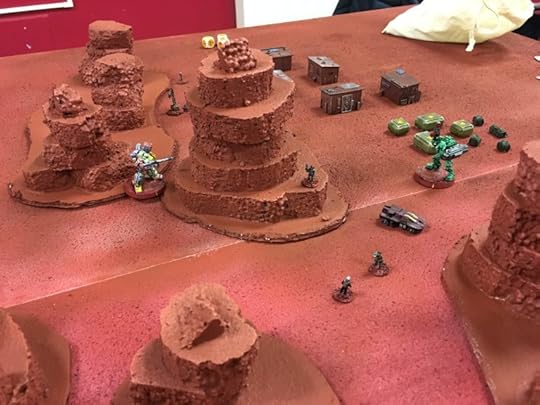
Game in progress at War & Peace Games Club
Simple But Significant Changes
As I mentioned earlier a game is complex and even small changes (like the values on a dice) can have wide-ranging consequences. I’m trying to alter as few things as possible at any given moment so that I can keep a clear line between cause-and-effect, watching how each of the mechanics interacts to create the gameplay. Little tinkering can give big results if you move the right piece, and if you move too many it’s impossible to track what is working and what isn’t.
In the end I have chosen a very simple solution, which both gives the game a better flow, I think, but also reduces the opportunities for pilots to perform damage control. Originally I had a turn sequence that allowed the players a free ‘reactor activation’ at the start of each turn, distributing dice to the other systems, performing damage control, etc. I have removed that free phase, which means less time for damage control and also has some pleasing implications for how the card activation system works (which I’ll be looking at in a video in a few weeks’ time).
That’s all I have to do at the moment.
I will play the game again with that simple alteration and see what effect it has. If more changes are needed then I’ll look at something else, but I am reasonably confident at this stage that it should do the job.
If you want to keep up with the game’s development, please sign up to my dedicated Big Stompy Robots newsletter. You can also read my developer diary over on the Big Stompy Robots page. And if you want to have a demo game, I’ll be taking it to the new wargames show ChillCon in Sheffield on the 27th May.
Please Feel Free to Share:







March 22, 2017
It’s All About The Audio
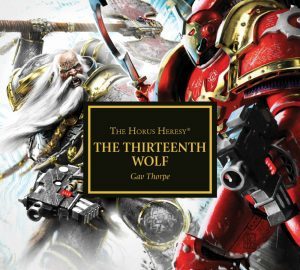 Ex Black Library editor Laurie Goulding was kind enough to commend my skill at writing stories for audio*, in a recent (very interesting) Track of Words interview, so I thought it might be useful to highlight some of my blogs on writing for the audio format.
Ex Black Library editor Laurie Goulding was kind enough to commend my skill at writing stories for audio*, in a recent (very interesting) Track of Words interview, so I thought it might be useful to highlight some of my blogs on writing for the audio format.
“Gav was one of my go-to audio writers, he’s done so much of it and I think he’s got a real feel for the medium, a real flair for seeing those sound design opportunities.”
* despite rumours to the contrary, I’m not blackmailing Laurie with photos of him in a compromising position with a copy of Horus Rising, a rubber mitt, and a near-empty pot of Fulgrim Pink.
Before you start writing your audio drama it’s worth taking a moment to think about whether your story actually matches the audio format. In this blog post, I talk about the challenges of writing long-form and short fiction – as well as audio – and how you can manipulate your story to fit the intended format.
Great, you’ve decided that audio is the correct vehicle for your story. If you’re completely new to writing for audios I’ve published a couple of original script extracts, for The Thirteenth Wolf, and Asurmen: The Darker Road, which include sound direction and formatting. The Darker Road extract matches the audio extract on the Black Library website, so you can read along and see how the script was interpreted in the final version.
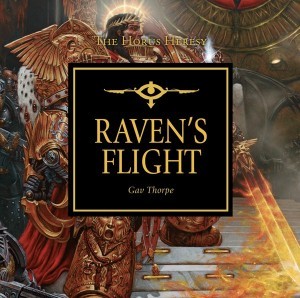 Next, have a read of my Top Tips for Creating an Audio Drama blog post. There is obviously more to writing for audio, and I’ve got several related topics on my ‘blogs to write’ list, but hopefully this post will give you a good start. It would be remiss of me not to mention here my go-to book ‘Screenwriting 101‘ by Neill D Hicks. Although tagged as ‘The Essential Craft of Feature Film Writing’, it is a book I return to again and again for all types of writing, and I would heartily recommend it.
Next, have a read of my Top Tips for Creating an Audio Drama blog post. There is obviously more to writing for audio, and I’ve got several related topics on my ‘blogs to write’ list, but hopefully this post will give you a good start. It would be remiss of me not to mention here my go-to book ‘Screenwriting 101‘ by Neill D Hicks. Although tagged as ‘The Essential Craft of Feature Film Writing’, it is a book I return to again and again for all types of writing, and I would heartily recommend it.
Finally, to read about an integral part of the audio process, you can read this interview with Penelope Rawlins, the voice actor for the Farseer Shar-telion, in The Darker Road. I hope to have an interview with producer Matthew Renshaw in the near future, to learn more about the audio production process, so keep an eye on my blog for that.
Hopefully this whistle-stop tour will give you the basics of writing for audio. As always, if you have any questions, just let me know in the comments.
**To make sure you don’t miss out on any blog posts, you can keep up-to-date with everything Gav by signing up to my monthly newsletter. As a bonus, every other month I randomly pick a newsletter subscriber to receive a free signed copy of one of my books.**
Please Feel Free to Share:







March 11, 2017
Legion Der Suhne & Les Impardonne
In case you missed it, the French and German translations of The Unforgiven are now available to purchase.
Les Impardonne
L’Héritage de Caliban résonne à travers les âges, et la mission secrète des Dark Angels se poursuit: expier les péchés de leurs aïeux et capturer tous les renégats et hérétiques connus sous le nom de Déchus. Le plus fameux de ces Dark Angels Déchus – l’insaisissable Cypher – s’est rendu contre toute attente, ce qui ravive l’espoir des Dark Angels de se racheter aux yeux de l’Empereur. Mais à quel jeu Cypher joue-t-il? Quel sont ses desseins? Les Dark Angels peuvent-ils vraiment se racheter un jour, ou bien sont-ils voués à demeurer les Impardonnés?
ISBN: 978-1780303314
Buy Les Impardonne
Legion Der Suhne
Das Vermächtnis von Caliban hallt wie ein Echo durch die Zeitalter und die geheime Mission der Dark Angels geht weiter: sich von den Sünden ihrer Vorväter reinzuwaschen und die abtrünnigen Verräter zu finden, die als die Gefallenen bekannt sind. Jetzt, da der bekannteste dieser gefallenen Dark Angels – der schwer fassbare Cypher – sich in den Händen des Ordens befindet, schöpfen die Dark Angels neue Hoffnung, dass sie sich in den Augen des Imperators bewähren können. Doch welches Spiel spielt Cypher? Welche Pläne verfolgt er? Und können die Dark Angels jemals wirklich Vergebung finden oder werden sie immer die Legion der Sühne bleiben?
ISBN: 978-1781932179
Buy Legion Der Suhne
**To make sure you don’t miss out on any blog posts, you can keep up-to-date with everything Gav by signing up to my monthly newsletter. As a bonus, every other month I randomly pick a newsletter subscriber to receive a free signed copy of one of my books.**
Please Feel Free to Share:









